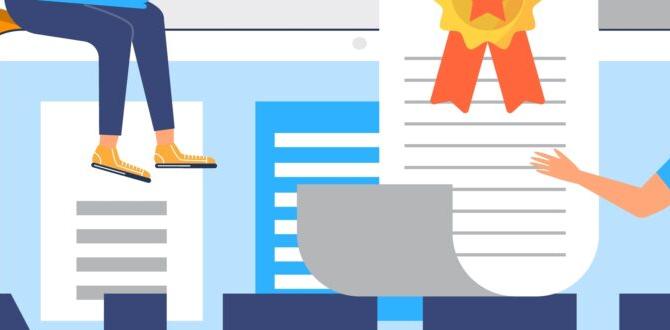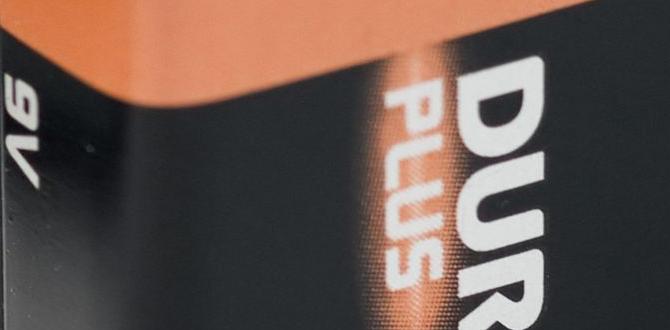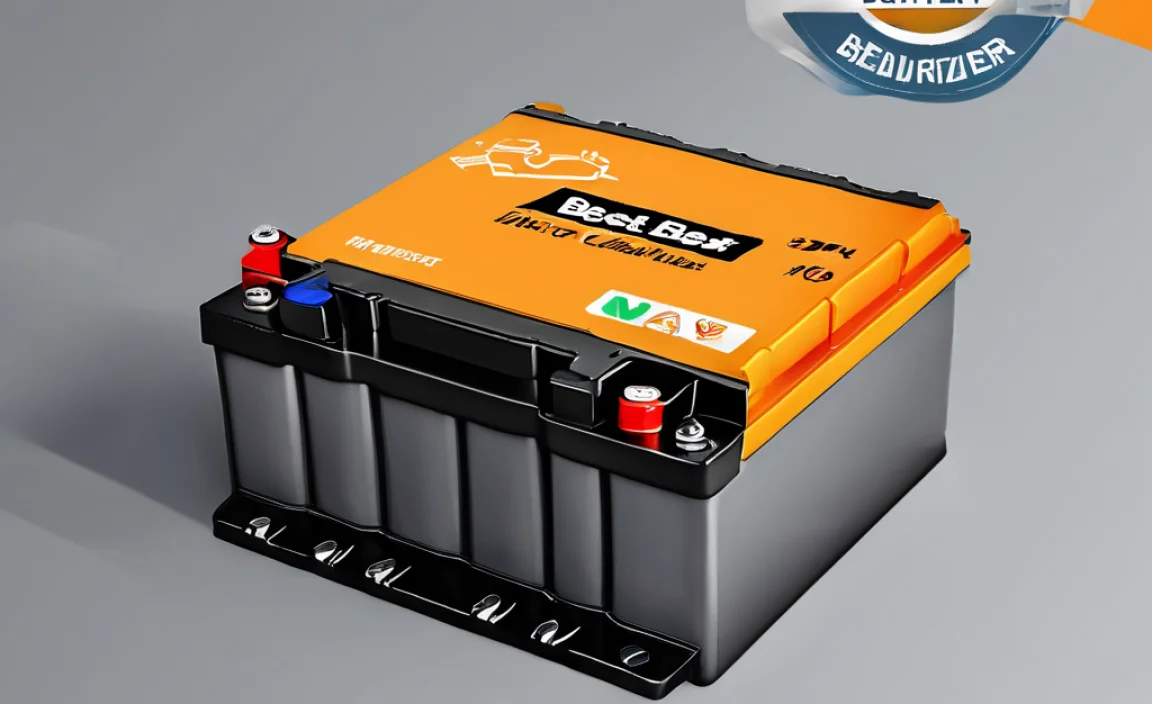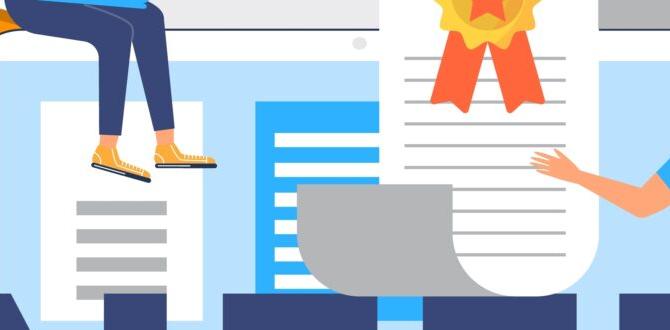Yes, you can charge your Honda Prologue at a Tesla Supercharger using a specific adapter. This guide explains which adapter you need, how to use it safely, and important considerations for seamless charging.
So, you’ve got the brand-new Honda Prologue and you’re wondering about charging options. It’s totally understandable! With so many charging networks out there, figuring out how to juice up your electric ride can feel like a puzzle. Especially when you see those handy Tesla Supercharger stations and think, “Can my Prologue use those?” The great news is, with the right adapter, the answer is a resounding yes!
It’s a common question, and we’re here to make it simple. We know you want to get moving again as quickly and easily as possible, without any confusing tech talk. This guide is all about demystifying the process of using a Tesla charger with your Honda Prologue. We’ll walk you through exactly what you need and how to do it with confidence.
Understanding Your Honda Prologue and Charging
The Honda Prologue is an all-electric SUV built on a platform co-developed with General Motors. This means it shares some underlying technology with GM’s electric vehicles (EVs), like the Chevrolet Bolt EUV. For charging, this is important because it dictates the type of charging port your Prologue has.
Your Honda Prologue is equipped with a standard CCS (Combined Charging System) port for DC fast charging. This is the most common standard for non-Tesla EVs in North America. For Level 2 (AC) charging, it also uses the standard J1772 connector. These standards are designed to be versatile, allowing various charging stations to connect to different EVs.
The Charging Port Explained
Let’s break down that charging port you’ll find on your Prologue:
- CCS Port: Located on the driver’s side rear panel of the Prologue, this port has two large pins below a smaller connector. The smaller part is the J1772 connector for AC charging, and the two larger pins are for DC fast charging. This combined system allows for both slower home charging and rapid DC charging on the go.
- J1772 Port: This is the standard connector for Level 1 (using a standard wall outlet with an adapter, usually very slow) and Level 2 (typically found at home or public charging stations) AC charging. All EVs sold in North America, except Teslas, use this for AC charging.
Knowing this helps us understand why an adapter is necessary when dealing with Tesla’s proprietary charging system.
Tesla Chargers and Adapters: What’s the Deal?
Tesla has its own fast-charging network called Superchargers, designed primarily for Tesla vehicles. These chargers use a connector that is physically different from the CCS or J1772 standards. For a long time, only Teslas could use these powerful and widespread charging stations.
However, the landscape is changing! Tesla is opening its Supercharger network to other EV brands. This is happening through a phased rollout, and many newer EVs, including those built on platforms compatible with the Prologue’s architecture, can now access these stations. This accessibility is largely thanks to an adapter.
The Magic Adapter: NACS to CCS
To bridge the gap between Tesla’s connector and your Honda Prologue’s CCS port, you need a specific adapter. Tesla uses what’s known as the North American Charging Standard (NACS) connector for its Superchargers. Your Prologue uses the CCS standard for DC fast charging.
So, the adapter you need is a NACS to CCS adapter. This handy device essentially allows the NACS plug from a Tesla Supercharger to connect securely to your Prologue’s CCS port.
These adapters are becoming increasingly common and are manufactured by various companies. When looking for one, ensure it is specifically designed for connecting a Tesla NACS plug to a CCS vehicle port.
How the Adapter Works
At its core, the adapter is a passive device. It doesn’t actively convert the power (that’s handled by your car and the charger itself). Instead, it acts as a mechanical and electrical bridge:
- Mechanical Connection: It allows the Tesla connector to physically plug into your car’s charging port.
- Electrical Handshake: Critically, the adapter facilitates the communication (the “handshake”) between the Tesla charger and your Honda Prologue. This handshake is essential for safety and ensures the car and charger agree on charging speed and voltage.
It’s important to buy an adapter from a reputable manufacturer that has been tested and certified for use. Never use unverified adapters, as they could pose a safety risk or damage your vehicle’s charging system.
Choosing the Right Honda Prologue Adapter for Tesla Charger
Not all adapters are created equal. When you’re looking for a “Honda Prologue adapter for Tesla charger,” you’re likely searching for this very NACS to CCS adapter. Here’s what to look for:
- Compatibility: The adapter MUST be designed to connect a Tesla NACS charger to a CCS vehicle port. Double-check the product description.
- Build Quality: Look for an adapter made from durable, weather-resistant materials. It should feel solid and well-constructed. This ensures it can withstand outdoor use and repeated plugging/unplugging.
- Safety Certifications: While not always explicitly listed for adapters, look for manufacturers that emphasize safety testing. Reputable brands will often mention that their products meet specific electrical safety standards, even if not formal certifications.
- Reputable Brands: Stick with well-known EV accessory manufacturers or those with excellent reviews from other EV owners. Some popular choices include Lectron, Tesla itself (though access might be limited for non-Teslas), and other specialized EV charging component companies.
Where to Buy:
- Online EV accessory retailers
- Directly from adapter manufacturers’ websites
- Some major online marketplaces (Amazon, etc.), but be extra diligent about checking reviews and seller reputation.
Step-by-Step: Using a Tesla Supercharger with Your Honda Prologue
Once you have your NACS to CCS adapter, using a Tesla Supercharger with your Honda Prologue is straightforward. Here’s the process:
Before You Start: Essential Checks
Always perform these checks before plugging in:
- Check Tesla App/Navigation: Not all Tesla Superchargers support non-Tesla vehicles yet. Open the Tesla app on your phone or use the in-car navigation system of a Tesla (if available to you). Look for Supercharger stations marked as “Non-Tesla Supercharging” or with a specific icon indicating compatibility. This is crucial!
- Confirm Vehicle Compatibility: Ensure your Honda Prologue’s software is up-to-date. Honda has been working with charging networks, and software updates can enable compatibility with new standards or charging stations.
- Adapter Readiness: Make sure your NACS to CCS adapter is clean, dry, and free from any visible damage.
- Car Charging Port: Ensure the charging port on your Prologue is also free of debris.
The Charging Process
| Step | Action | Notes |
|---|---|---|
| 1 | Park Your Prologue: Position your vehicle so the charging port is close to the Supercharger stall. | Consult the Tesla app for recommended parking positions at compatible stations. |
| 2 | Open Charging Port: Press the button on your key fob or use the interior switch to open the charging port door on your Honda Prologue. | Ensure the CCS portion of the port is accessible. |
| 3 | Connect the Adapter: Take your NACS to CCS adapter. Plug the NACS end (the Tesla side) firmly into the Supercharger cable nozzle. Then, align the CCS end of the adapter with your Prologue’s charging port and push until it clicks securely in place. | You should hear a distinct click. Ensure it’s seated properly for a safe connection. |
| 4 | Initiate Charging (Tesla App): Open the Tesla app on your smartphone. Navigate to the Supercharger station you are connected to and select “Start Charging” or a similar option. The app should detect your vehicle via the adapter. | Follow any on-screen prompts within the Tesla app. You’ll need a Tesla account (even as a non-Tesla driver) to use the network. |
| 5 | Monitor Charging: Once charging begins, you should see the charging status on the Tesla app and likely on your Prologue’s dashboard or infotainment screen. The charging speed will be displayed. | Charging speeds can vary. Your Prologue will communicate its maximum charging rate to the Supercharger through the adapter. |
| 6 | End Charging: When your battery is sufficiently charged, or when you wish to stop, tap “Stop Charging” in the Tesla app. Wait for the charging status to indicate completion. | Do not forcefully pull the adapter or charger. |
| 7 | Disconnect: Carefully detach the adapter from your car’s charging port. Then, unplug the NACS end from the Supercharger nozzle. Close your Prologue’s charging port door. | Store both the adapter and the Supercharger nozzle properly. |
Important Note on Tesla App: You will need to download the Tesla app and create an account to use non-Tesla Supercharging stations. You can then add a payment method to pay for your charging sessions.
Safety First: Tips for Using the NACS to CCS Adapter
Safety is always my top priority when talking about power and charging. Using an adapter introduces an extra component, so a few extra precautions are wise:
- Inspect Regularly: Before and after each use, give your adapter a quick visual check for any cracks, frayed wires, or bent pins.
- Keep it Dry: Avoid using the adapter in heavy rain or if it’s visibly wet. Moisture can interfere with the electrical connections and pose a safety hazard.
- Secure Connection: Ensure both ends of the adapter are firmly connected. A loose connection can lead to poor charging performance or, in rare cases, overheating.
- Never Force Anything: If the adapter doesn’t connect smoothly, don’t force it. Check for obstructions or misalignments.
- Understand Charging Speeds: While Tesla Superchargers are fast, your Prologue has its own maximum DC fast-charging rate. The adapter and car will negotiate the fastest safe speed. Don’t expect to exceed your Prologue’s specified charging limit.
- Environmental Conditions: Extreme temperatures can affect charging. Be mindful of very hot or very cold conditions when charging outdoors.
- Unplug Safely: Always stop charging via the app before attempting to disconnect the adapter.
For more in-depth safety guidelines on EV charging, the U.S. Department of Energy’s Alternative Fuels Data Center offers excellent resources, including information on charging safety standards: you can find their EV charging information at afdc.energy.gov/vehicles/charging.
Pros and Cons of Using Tesla Superchargers with Your Honda Prologue
Switching to an electric vehicle like the Honda Prologue opens up a world of convenience, and using the abundant Tesla Supercharger network is a big part of that. But, as with any technology, there are advantages and potential drawbacks:
Advantages:
- Widespread Availability: Tesla has the most extensive fast-charging network in North America. This means more charging options, especially in areas where other networks might be sparse.
- Reliability: Tesla Superchargers are generally known for their high uptime and reliability compared to some other public charging networks.
- Speed: Superchargers offer very fast charging speeds, meaning you can add significant range to your Prologue in a short amount of time.
- Ease of Use (App): Once set up, initiating and paying for a charge via the Tesla app is usually a smooth experience.
Potential Disadvantages:
- Requires an Adapter: You cannot use Superchargers without purchasing a compatible NACS to CCS adapter upfront.
- App Dependency: You need a smartphone with the Tesla app installed and an account to initiate charging.
- Network Status: Compatibility with non-Tesla vehicles is still rolling out. Not every Supercharger station may support your Prologue, so checking the app beforehand is essential.
- Pricing: Charging costs on the Tesla network for non-Tesla vehicles might vary and could be higher than some other charging providers. Check the Tesla app for current rates at your chosen station.
- Adapter Durability: The adapter itself is an extra piece of equipment that needs care and could potentially fail if not manufactured well or handled roughly.
Charging Your Prologue: A Deeper Look at Charging Levels
While the adapter lets you access DC fast charging at Superchargers, it’s good to know about the different levels of EV charging:
Level 1 Charging:
- Uses a standard 120-volt home outlet.
- Slowest charging method.
- Typically adds only 3-5 miles of range per hour.
- Best for overnight charging of plug-in hybrids or for topping off EVs with short daily commutes.
- The Prologue’s portable charging cord will likely have a standard wall plug for this option.
Level 2 Charging:
- Uses a 240-volt outlet (like those for electric dryers).
- Much faster than Level 1, adding 20-40 miles of range per hour.
- This is the most common type of home charging and is found at many public locations (parking garages, shopping centers, workplaces).
- Your Prologue uses the J17772 connector for this. You’d need a Level 2 home charger or a public J1772 charger—no adapter needed for this.
Level 3 (DC Fast Charging):
- Uses high-voltage direct current (DC) power.
- The fastest way to charge an EV, capable of adding 100-300+ miles of range in 20-30 minutes.
- Tesla Superchargers are Level 3 stations.
- This is where the NACS to CCS adapter becomes essential for your Prologue to connect to a Tesla Supercharger.
Understanding these levels helps you plan your charging strategy. For daily driving, Level 2 home charging is often sufficient. For road trips or when you need a quick boost, DC fast charging (including compatible Tesla Superchargers) is the way to go.
Frequently Asked Questions (FAQ)
Q1: Can I use any Tesla charger with my Honda Prologue?
A: No, you can only use Tesla Supercharger stations that have been specifically upgraded or designated to support non-Tesla vehicles. You must check the Tesla app or your Prologue’s navigation system to identify compatible stations before arriving.
Q2: What is the adapter called?
A: You need a NACS to CCS adapter. NACS stands for North American Charging Standard (Tesla’s connector), and CCS stands for Combined Charging System (your Prologue’s standard DC fast charging port).
Q3: Do I need the Tesla app to charge my Prologue?
A: Yes, you will need to download the Tesla app, create an account, and link a payment method to initiate and pay for charging sessions at Tesla Supercharger stations.
Q4: Will charging at a Tesla Supercharger be as fast as a Tesla car?
A: The adapter allows connection, but your Honda Prologue’s onboard charging system has its own maximum DC fast-charging rate. You will charge at the quickest speed your Prologue can safely handle, which may be different from the maximum speed a Tesla vehicle can achieve at the same charger.
Q5: Where can I buy a NACS to CCS adapter?
A: Reputable online EV accessory retailers, directly from adapter manufacturers (like Lectron), or sometimes through major online marketplaces. Always ensure the adapter is specifically designed for Tesla NACS to CCS vehicle charging and comes from a trusted source.
Q6: Is it safe to use an adapter?
A: Yes, when using a high-quality adapter from a reputable manufacturer that is designed for this purpose, it is safe. Always inspect the adapter before use and ensure a secure connection. Follow all safety guidelines provided by the adapter manufacturer and your vehicle’s manual.
Q7: What if the Tesla Supercharger station doesn’t recognize my Prologue with the adapter?
A: First, double-check that you have the correct adapter for NACS to CCS. Ensure you followed the correct steps within the Tesla app to initiate charging. If it still doesn’t work, verify that the specific Supercharger station you are at supports non-Tesla charging actively. Sometimes chargers can have temporary glitches, so trying another compatible station might be necessary.
Conclusion: Powering Up Your Honda Prologue with Confidence
Navigating the world of EV charging might seem complex at first, but with the right tools and knowledge, it becomes second nature. The Honda Prologue is a fantastic electric SUV, and by understanding how to use a NACS to CCS adapter, you unlock access to one of the most extensive and reliable fast-charging networks available—Tesla Superchargers.
Remember to always check for station compatibility via the Tesla app, invest in a quality adapter from a trusted source, and follow the simple step-by-step process outlined in this guide. Safety and proper connection are key, just like with any power source. This adapter isn’t just a piece of plastic and wire; it’s your ticket to greater charging flexibility, giving you peace of mind on longer journeys and more options for keeping your Prologue powered up and ready for adventure.
So, go ahead and embrace the open road! With your Honda Prologue and the right adapter in hand, you’re well-equipped to make the most of your electric driving experience. Happy charging!




